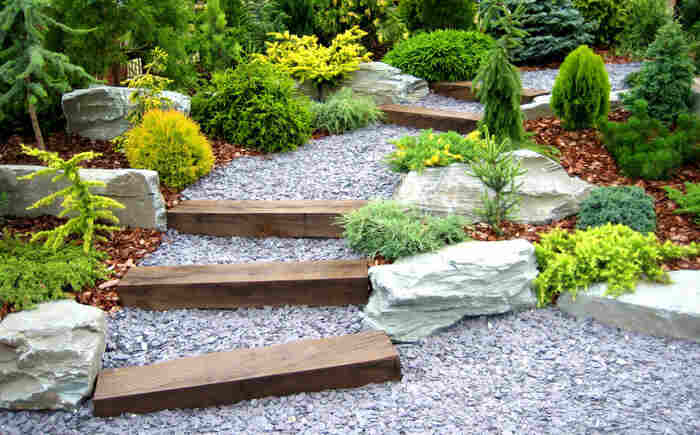
Gardening is an incredible hobby that allows people to express their creativity and create beautiful outdoor areas. However, designing a lawn can be a frightening venture, especially when considering the value and renovation involved. One technique for these demanding situations is to incorporate gravel into your garden. Gravel is a flexible, occasional-fee fabric that could transform your garden into a stunning and functional space. Visit this page if you want to use gravel, a low-maintenance, cost-effective landscaping material that can be used to achieve a range of various effects, to construct a flexible and low-value lawn plan.
In this article, we will discover the blessings of using gravel in gardens and provide pointers on how to contain it efficiently.
Blessings of using Gravel
Gravel has several advantages with regards to garden design. First of all, it’s a very cost-effective choice in comparison to other materials, which include paving stones or decking. Gravel is easy to obtain and relatively less expensive, making it an attractive desire for those on a budget. Moreover, gravel requires minimal renovation. In contrast to grass or other vegetation, gravel does not need mowing, watering, or fertilizing. This makes it the best alternative for those with busy schedules or restricted gardening time.
Furthermore, gravel can provide terrific drainage for your garden. Its porous nature permits water to effortlessly pass through, stopping the soil from becoming waterlogged and reducing the threat of plant diseases. that is specifically beneficial in regions with heavy rainfall or clay soil, in which drainage may be an undertaking.
Gravel additionally has aesthetic benefits for a lawn plan. It comes in a variety of sizes, shapes, and colors, allowing you to create distinctive textures and patterns. Whether you pick a country, herbal, or more present day layout, gravel may be easily integrated to attain the favored effect. It can be used to create pathways, borders, or as a ground cover to spotlight precise regions of your lawn.
Every other benefit of the use of gravel in lawns is its versatility. It can be easily moved or rearranged, providing you with the ability to alternate the design of your garden as desired. This is especially beneficial if you like to experiment with unique designs or if you have vegetation that requires distinct conditions, which include solar-loving and color-loving plant life.
Hints for Incorporating Gravel into the Lawn Layout
When using gravel in your garden, there are numerous factors to consider to ensure a successful design. Here are some pointers to help you incorporate gravel efficiently:
1. Pick out the right sort of gravel:
There are distinct varieties of gravel to be had, which include crushed stone, pea gravel, and river rock. Reflect on the general aesthetic of your lawn and select a gravel type that enhances it. moreover, reflect on the size and color of the gravel to create the preferred look.
2. Determine the purpose of the gravel:
Gravel can serve numerous purposes in a garden, consisting of developing pathways, defining borders, or offering drainage. The perception of the particular cause will help you decide the quantity and placement of the gravel.
3. Put together the location:
Before laying the gravel, put together the area with the aid of clearing any flora, weeds, or particles. If the floor is crucial, consider putting in a weed barrier to prevent weed growth through the gravel.
4. Create a border or edging:
To offer an easy and described look, think about adding a border or edging around the gravel region. this will be completed with the use of substances like bricks, stones, or steel edging. it’s going to additionally help maintain the gravel in place, especially in areas with foot traffic.
5. Installation and proper drainage:
If you are using gravel in regions at risk of water accumulation, including near downspouts or low-mendacity areas, make sure there is proper drainage. this may be executed by including a layer of gravel below the top layer or by incorporating a French drain gadget.
6. Reflect on the consideration of protection:
Gravel calls for normal preservation to maintain its appearance. Rake the gravel periodically to even out any choppy areas or displacements. Additionally, think about adding more gravel through the years to top off any loss because of erosion or natural wear.
7. Integrate with other elements:
Gravel can be efficiently mixed with different elements in your lawn layout. Think about incorporating flora, stepping stones, or ornamental features to create visible interest and enhance the general look of your lawn.
8. Take safety precautions:
If you are using gravel in regions with heavy foot traffic, consider using smaller-sized gravel or including a stabilizing agent to prevent slipping. That is particularly important on pathways or in areas where children or older individuals may be taking walks.
By thinking about those elements and following these pointers, you could efficaciously incorporate gravel into your lawn design and create a visually attractive and useful outdoor space.
Conclusion
Using gravel in lawn format offers several benefits, which include cost-effectiveness, low protection, and flexibility. By following the suggestions mentioned above, you could successfully incorporate gravel into your garden and create a beautiful outdoor space. Whether or not you select to use gravel for pathways, borders, or as a ground cover, it’s miles sure to add texture and visual interest to your garden sketch. So, reflect on the use of gravel for your subsequent garden project and enjoy the beauty and capability it brings to your outdoor oasis.
